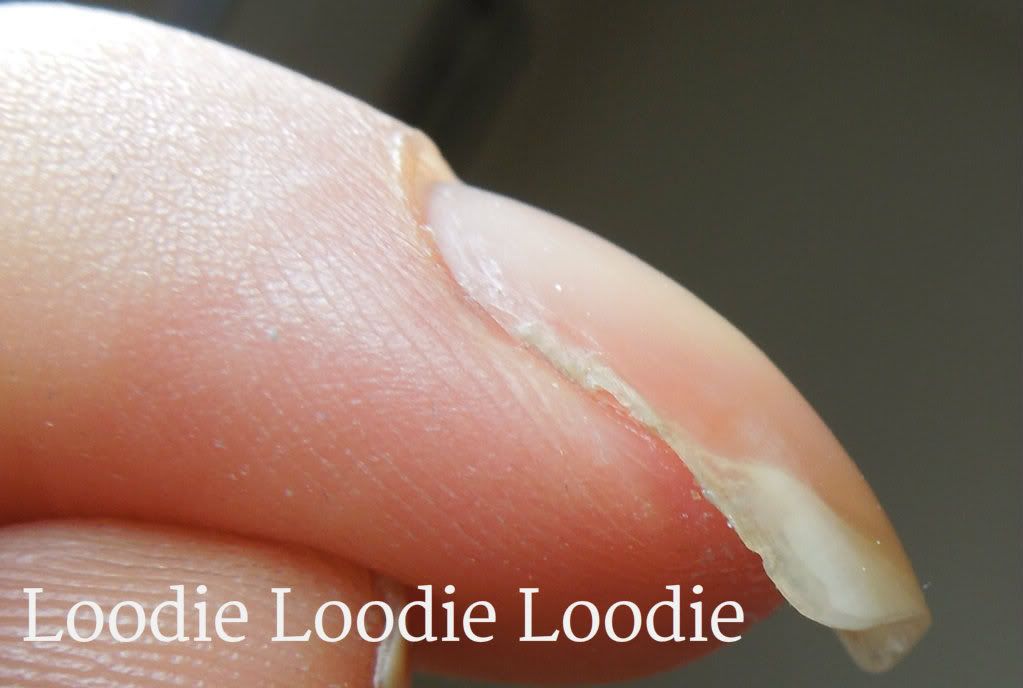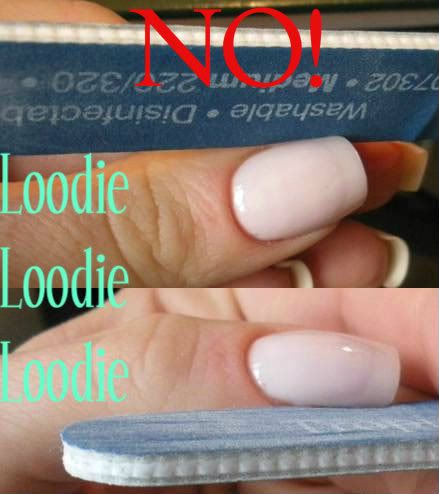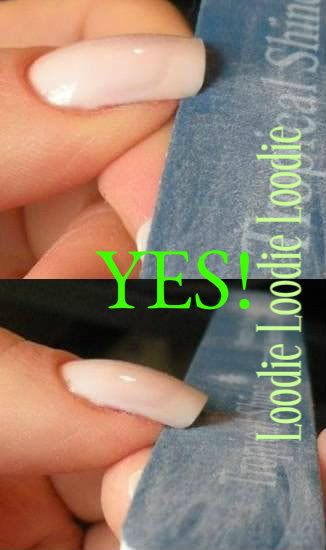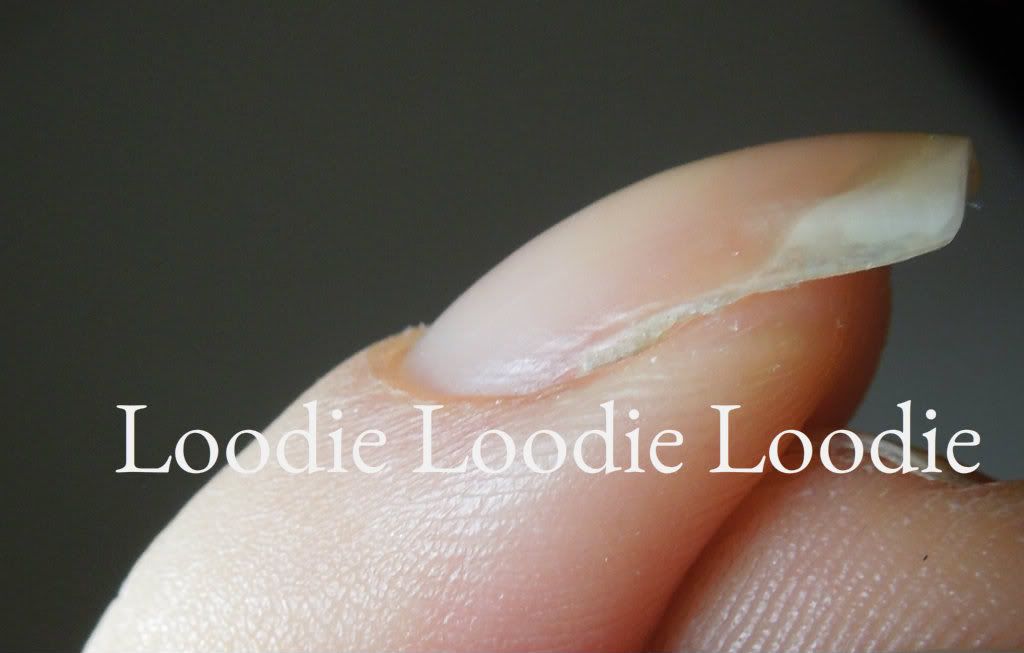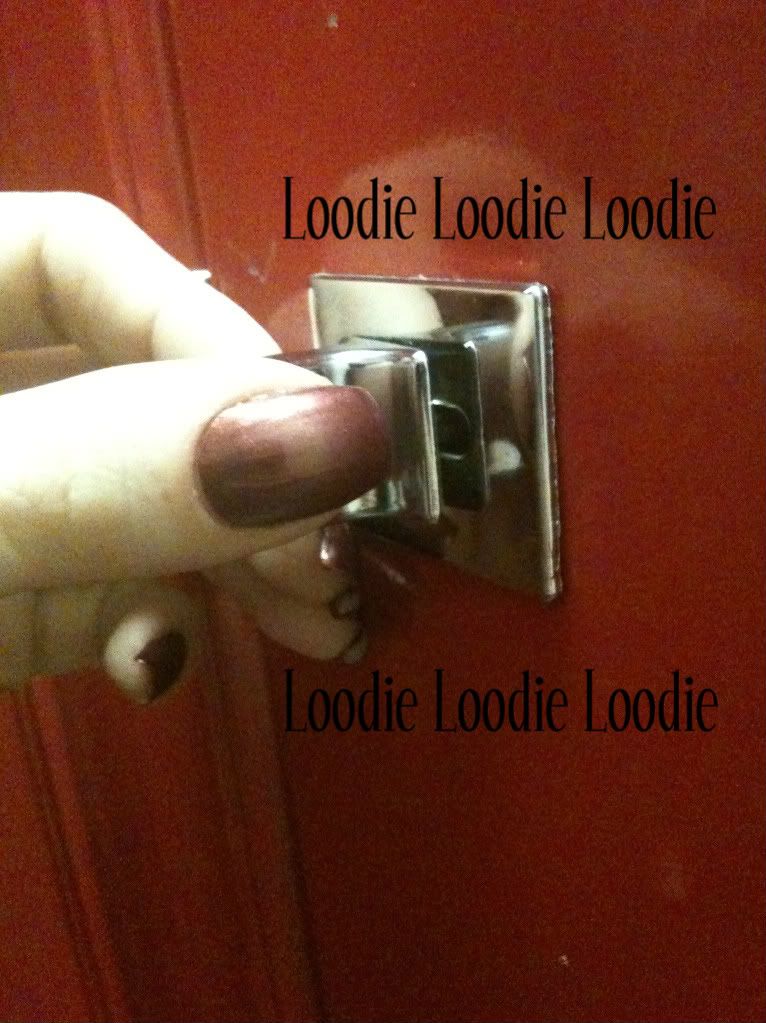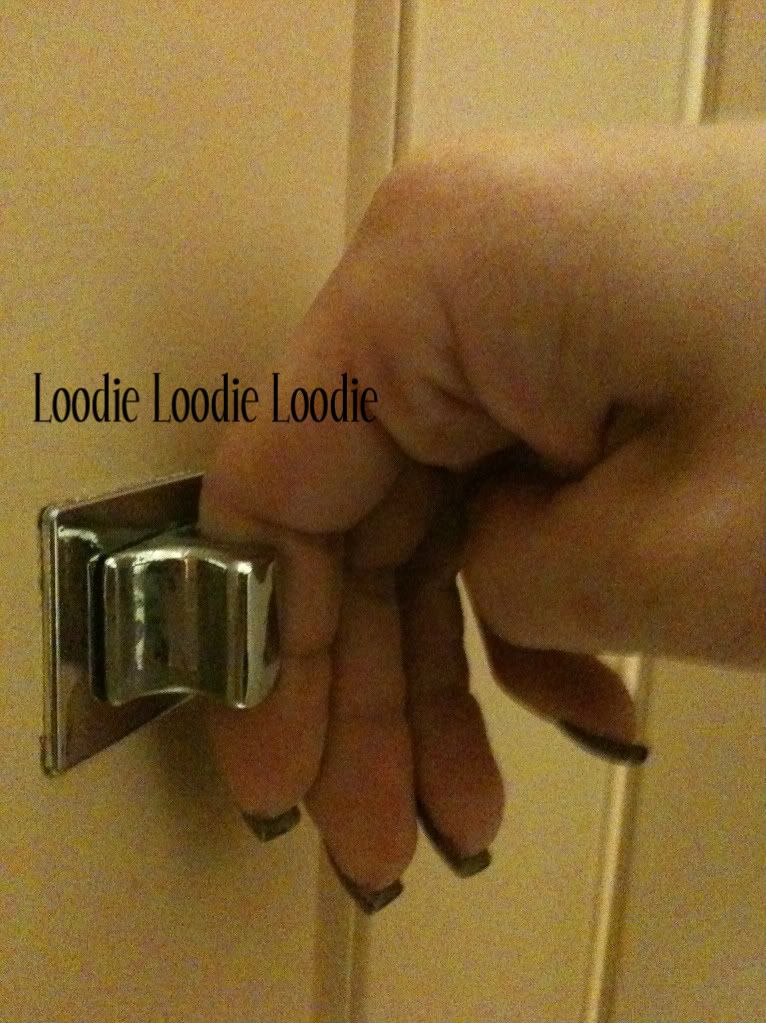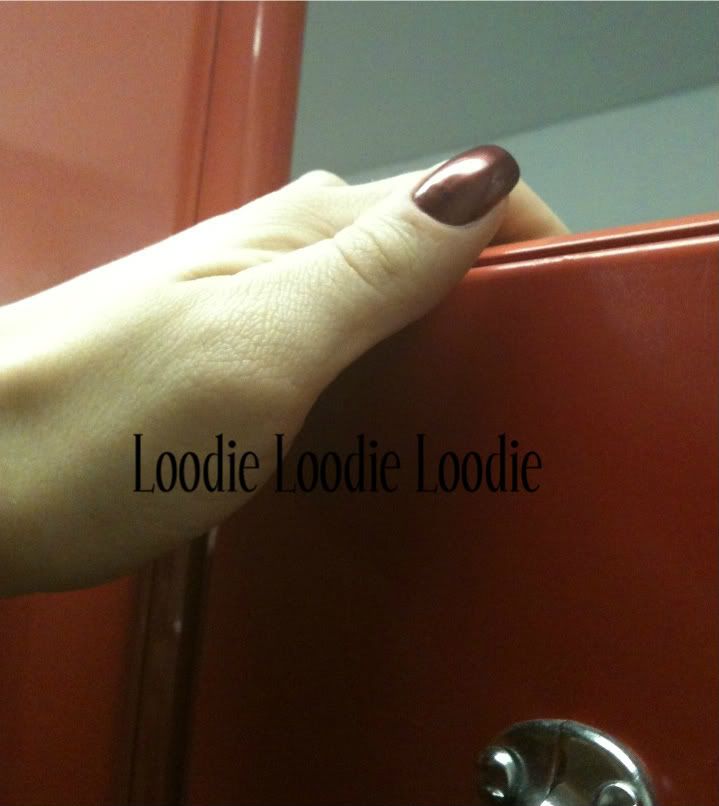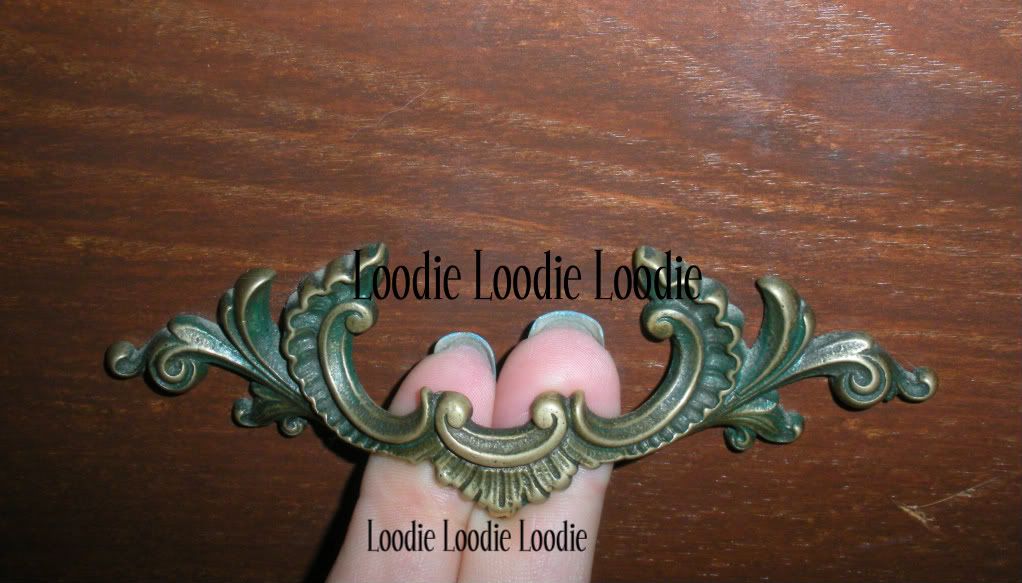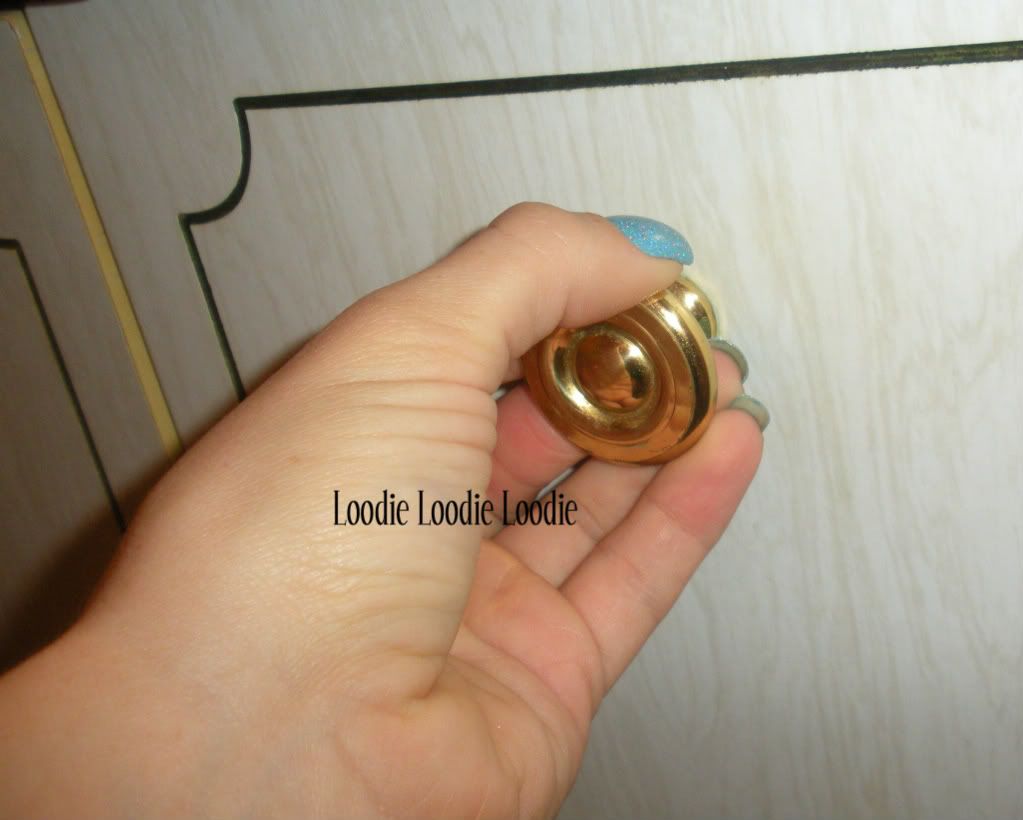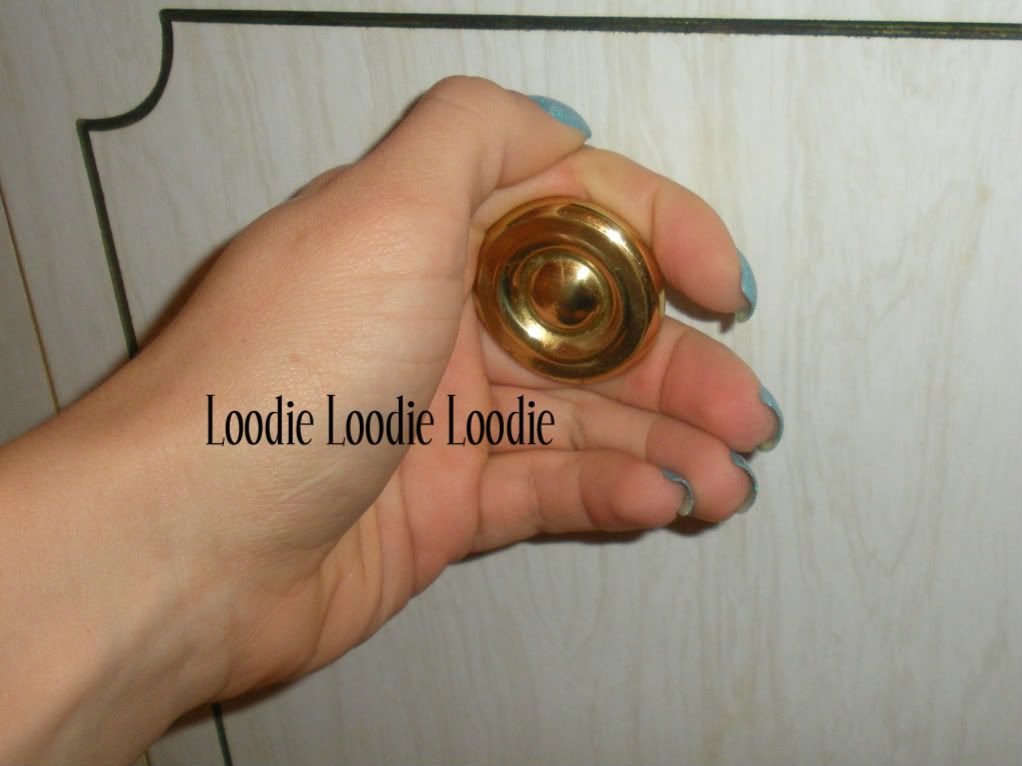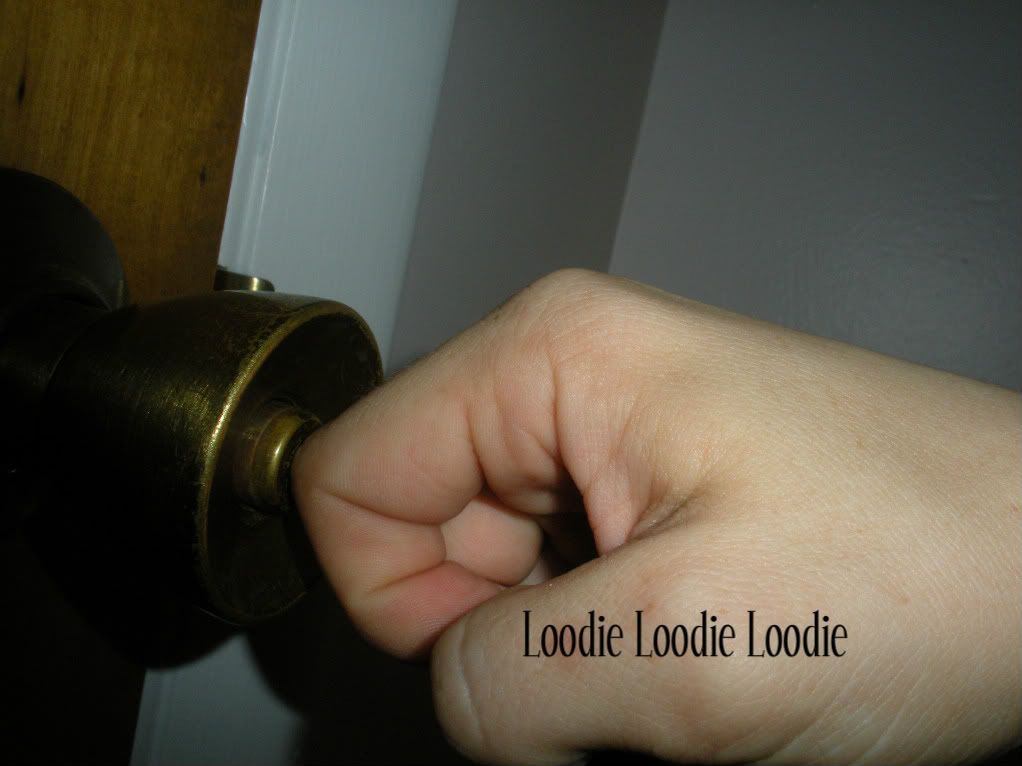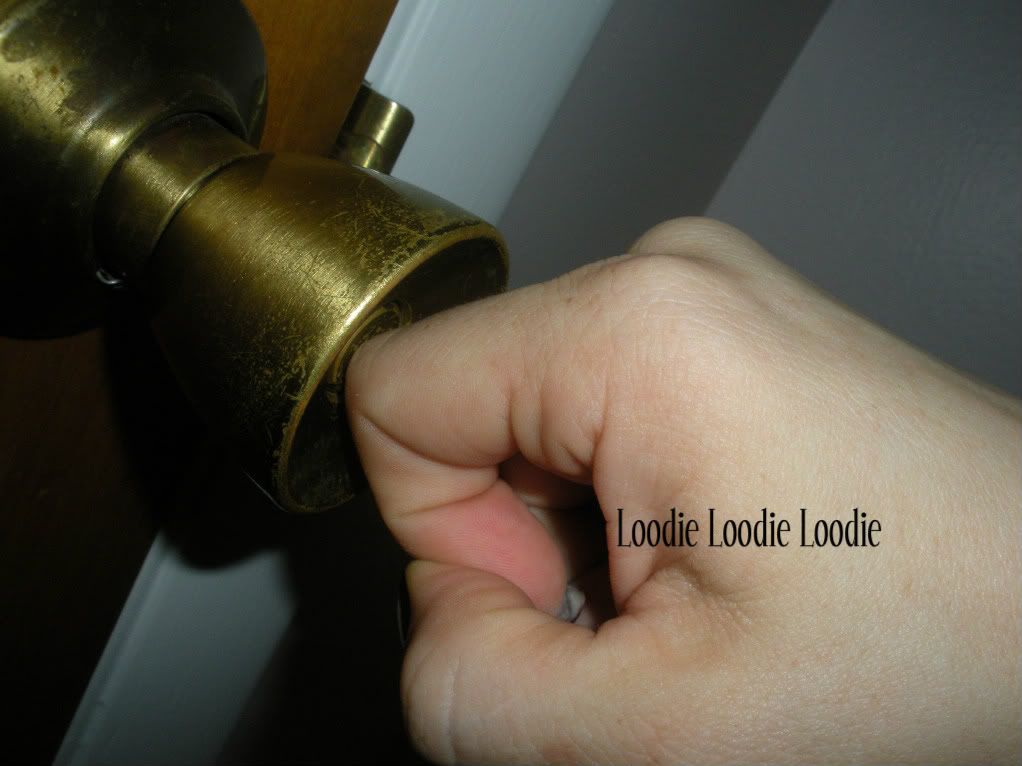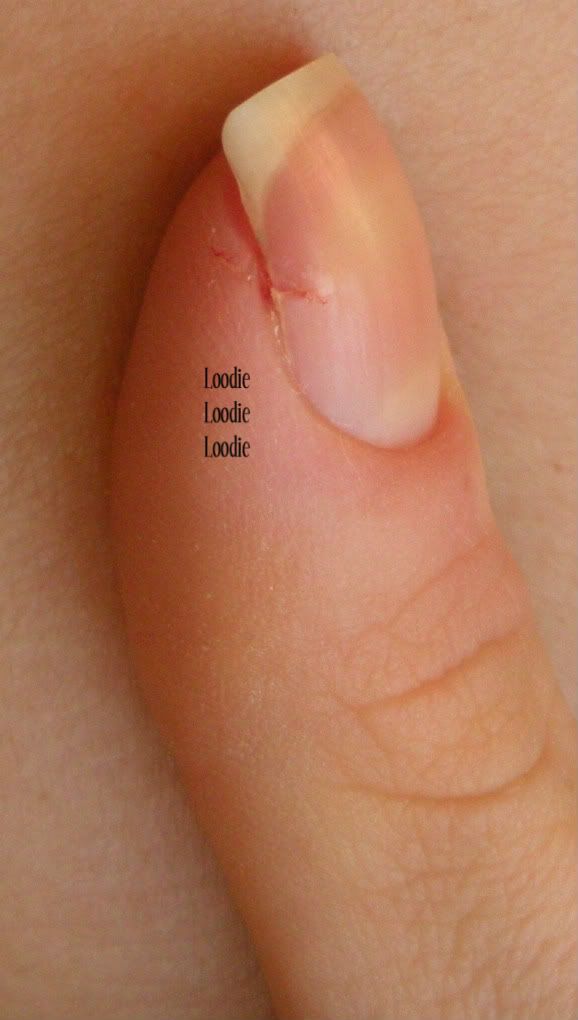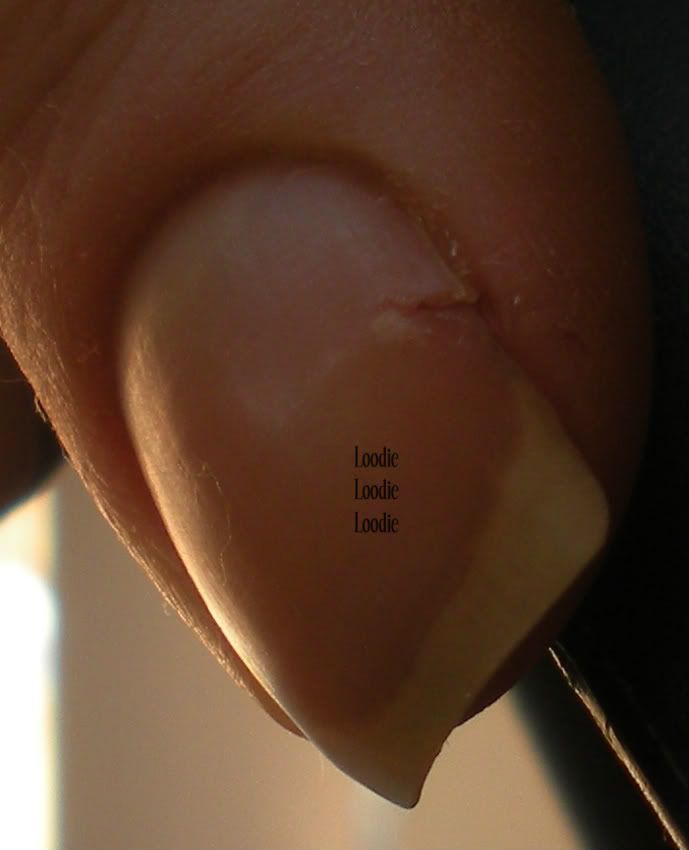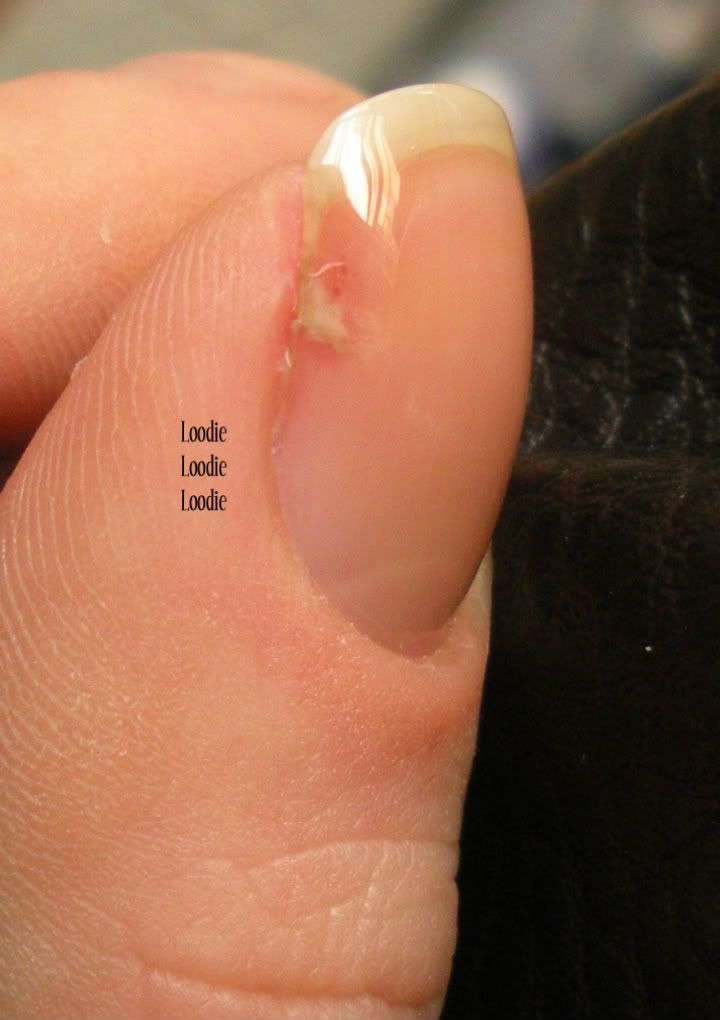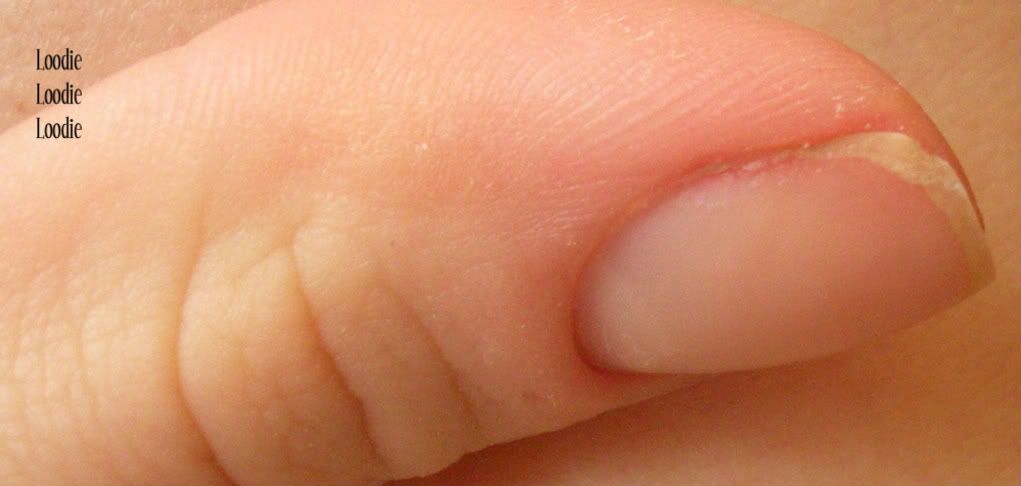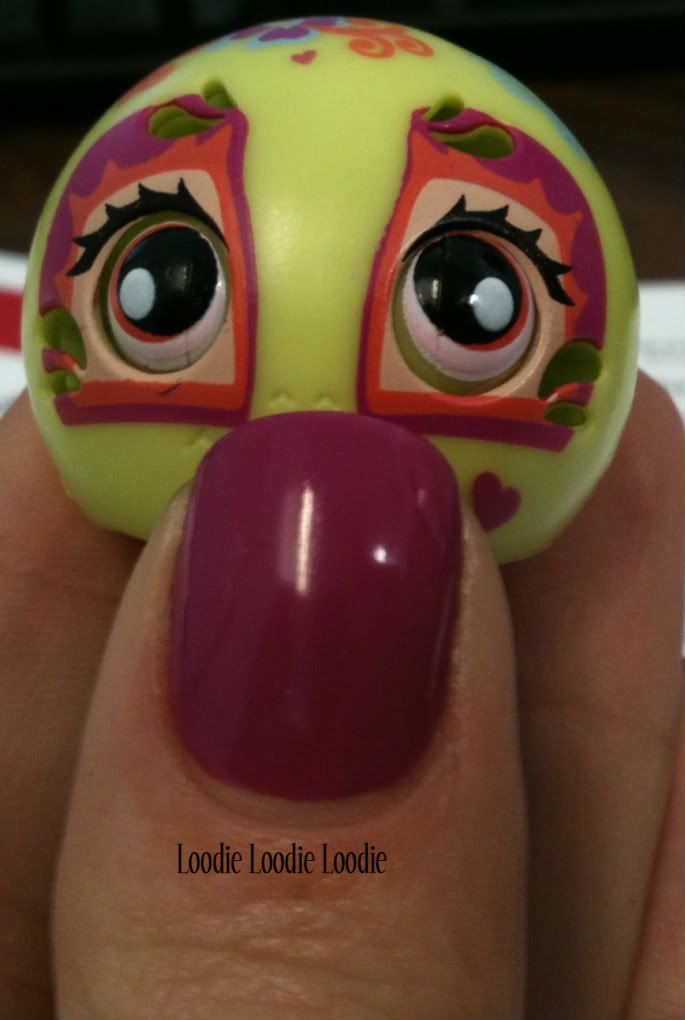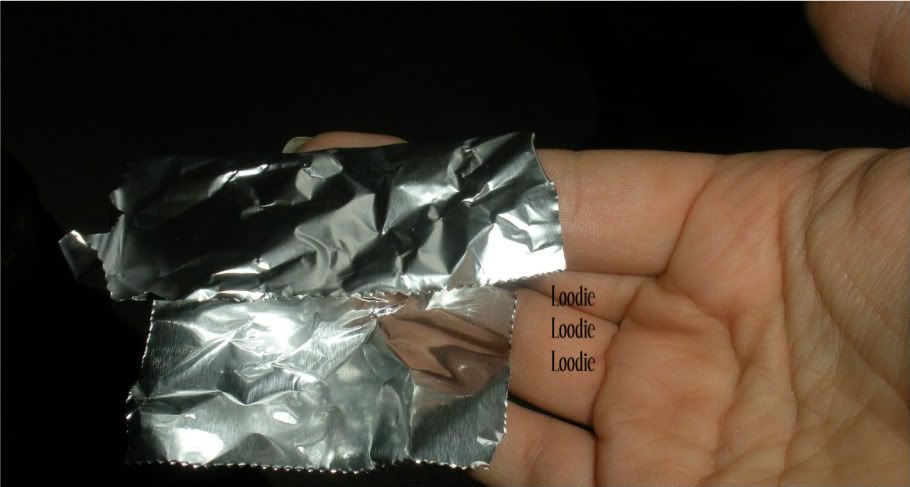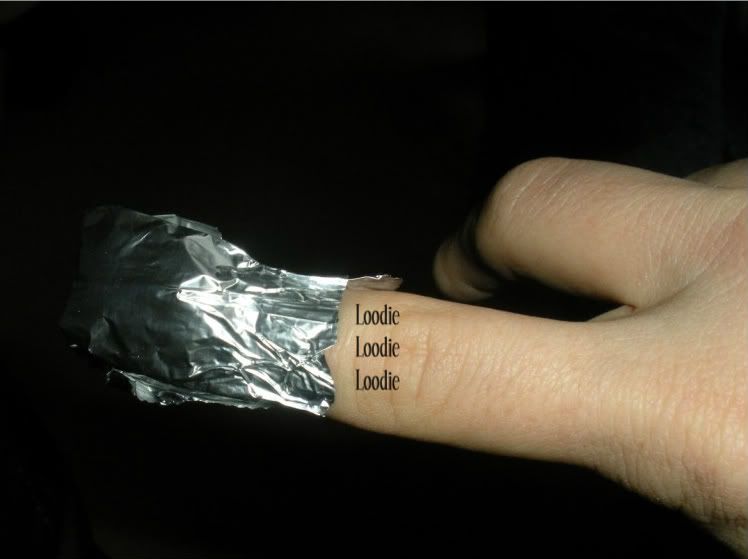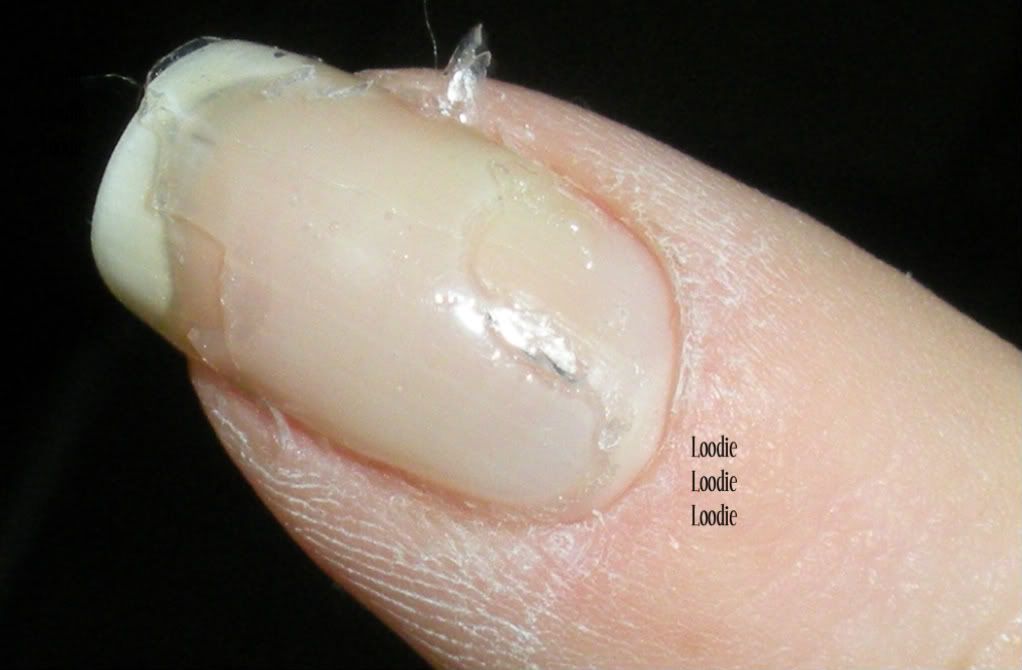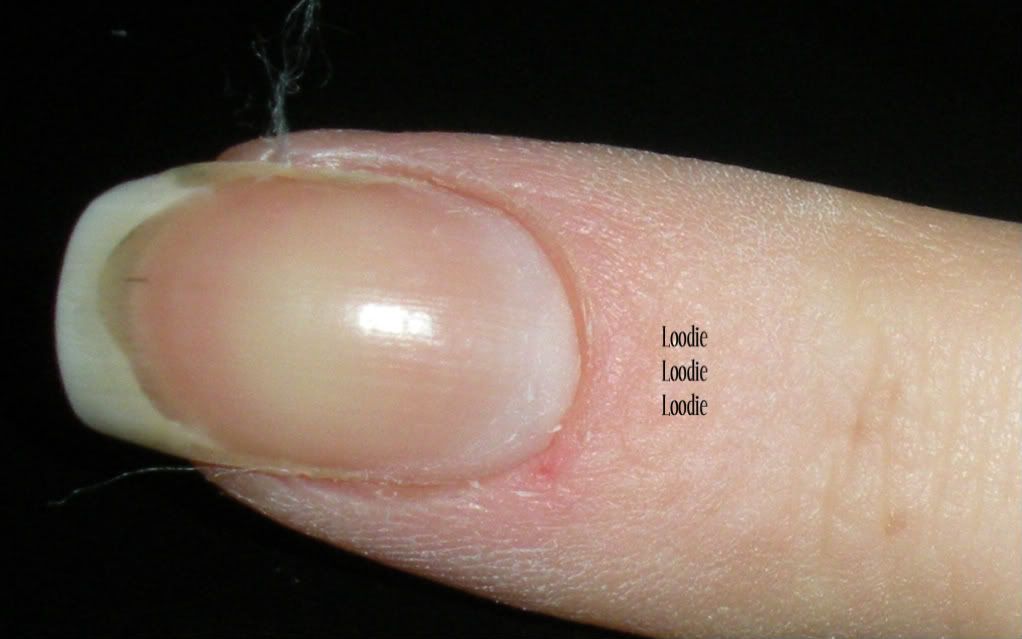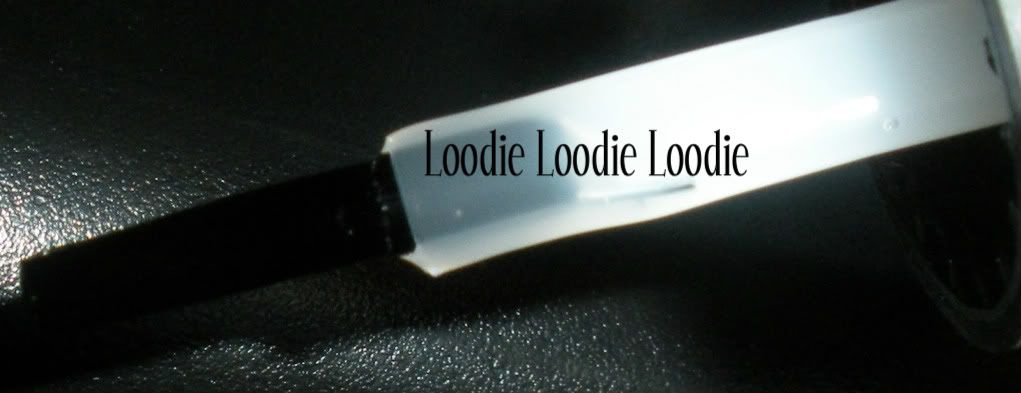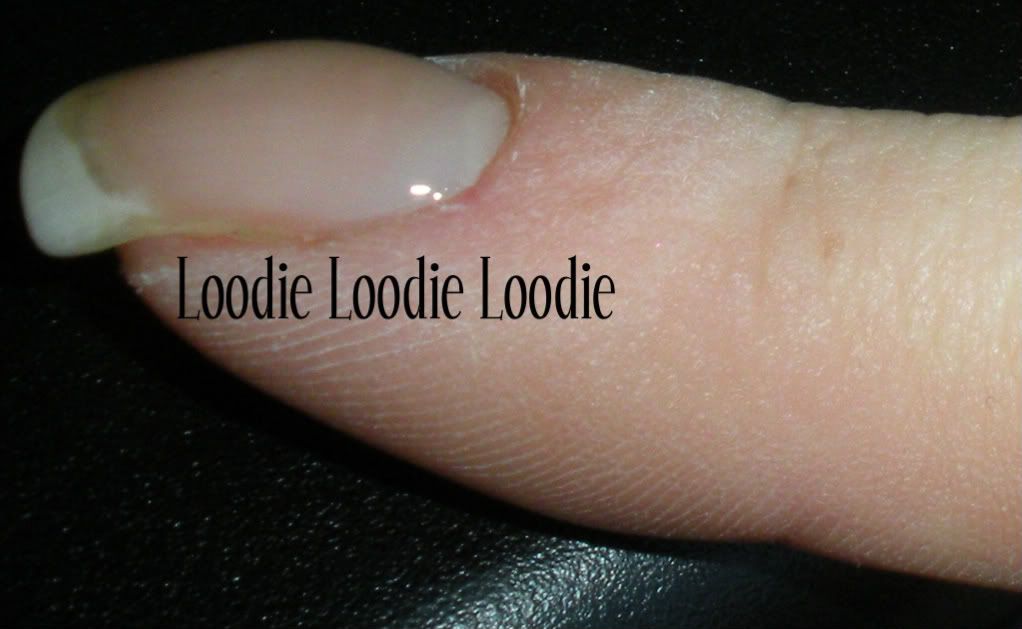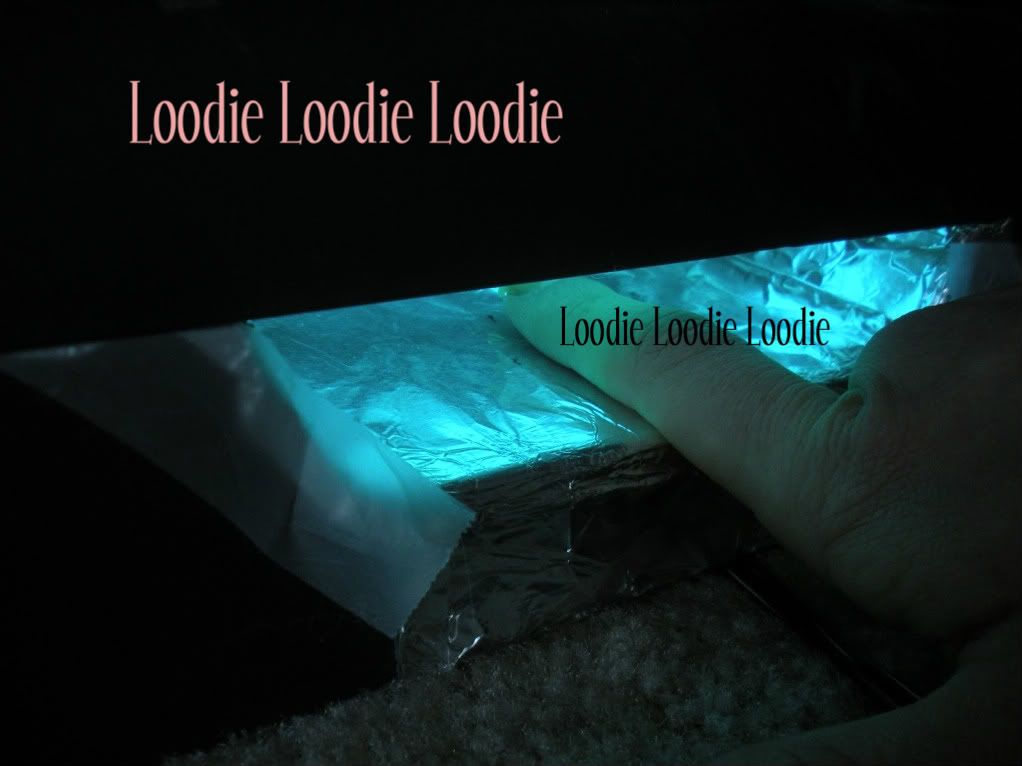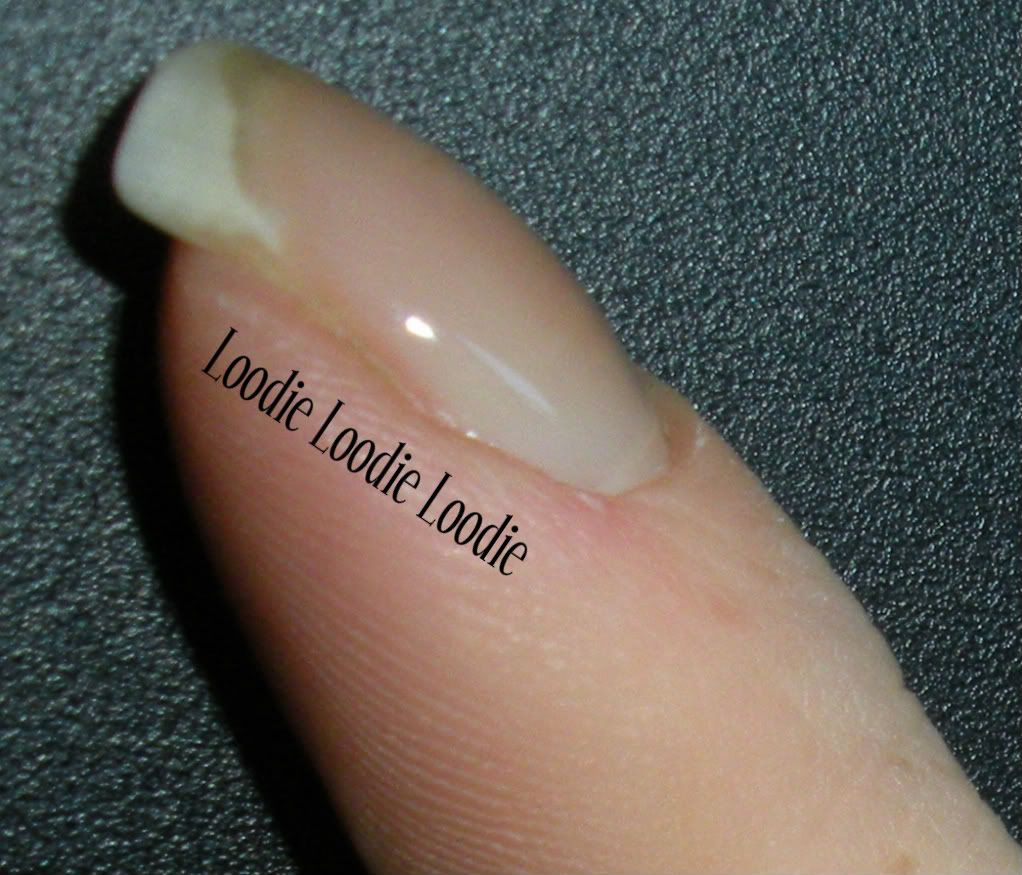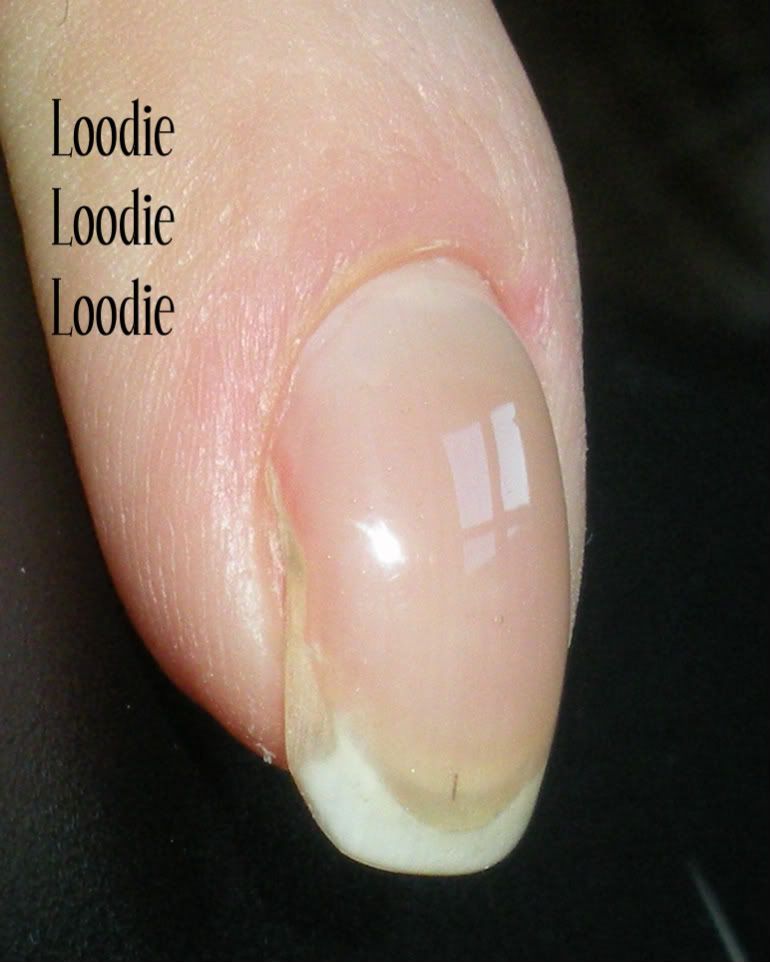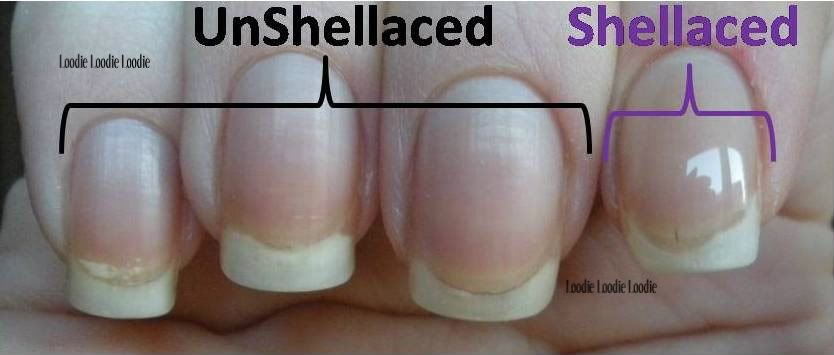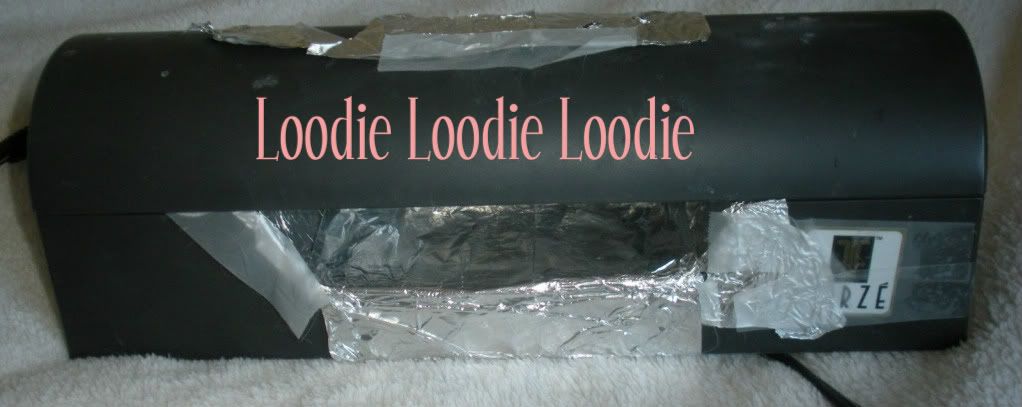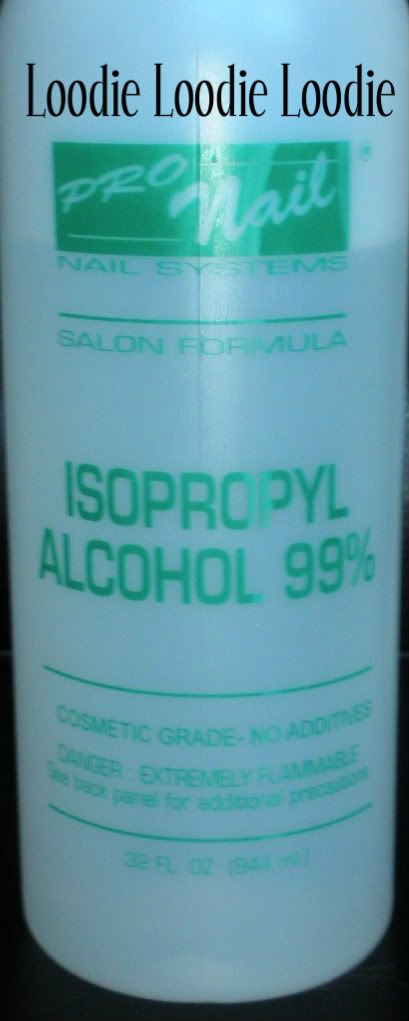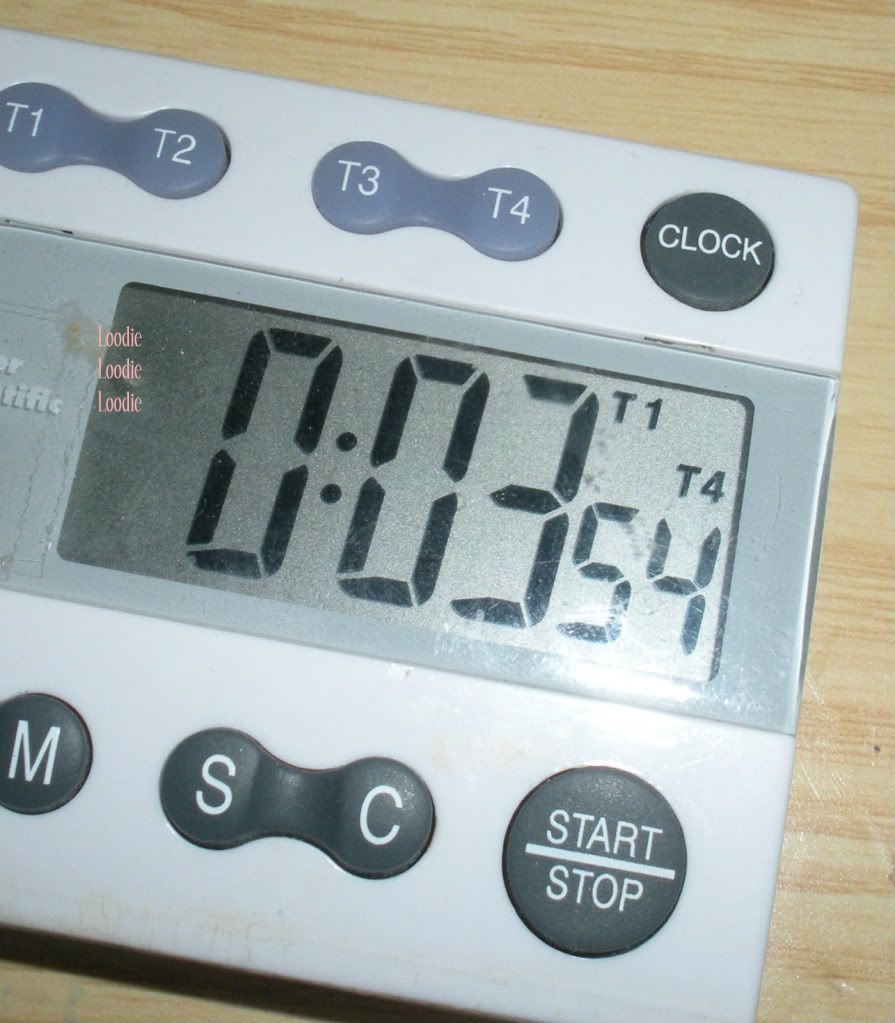In this post I will show you proper nail prep and application of Shellac for a nail crack or tear. I have to stress this nail fix is not for peeling. If you have peeling you must buff out the peel first, otherwise the shellac will peel off, and what would be the point right? *note to self, must do a "fix a peel post"
This is Part II of the Nail Fix with Shellac series.
Part I of this post can be found
here. Scroll to the bottom of the post for the rest of the series :)
Would you like to see a video of this process?! Click
here.
First we must prep the nail:
1. The
true cuticle (dead skin cells or ptygerium that can grow on the nail plate) must be pushed back or removed. If you put shellac on top of it, it will lift at the cuticle. I showed an example of this problem in my
Sally Hansen Sweet Tulip Performance Test. Although a proper post is due on how to remove cuticle, for all intents and purposes, either use a cuticle remover to remove it or oil to soften and push back this skin. The post (with video!) about using a cuticle remover can be found
here.
2. Make sure the nail is dry. Your nail should not have visited water for at least an hour before this method of fixing. If you apply shellac to a nail that has slight moisture, once the nail goes back to its dry curvature, the shellac can lift.

3. Once you are convinced your nail is dry make sure it is clean and free of dirt and oil. Wipe the nail with pure acetone thoroughly, both on top and under the tip.
4. Remove any fuzzies.
awww, for my ouchie
5. In this example I will only use Shellac top coat because the Shellac base coat I received had a brush that looked like the picture below. BUT keep in mind using the base coat does make the Shellac last longer than top coat alone.
Ignore the color. I tried switching brushes from another bottle, but apparently there was some hardening of the Shellac and it bent that brush as well. Although I used the base several times with the wonky brush, I find that the product works just as well with just the top coat. I think the most important part of using Shellac to fix a nail is the amount of coats combined with proper curing times. So, a proper working brush is a must and makes this process a breeze.
It should look like this brush.
The official process for Shellac is:
a. base coat ... cure 20 sec.
b. color coat ... cure 2 min.
c. color coat ... cure 2 min.
d. top coat ... cure 2 min.
However, I do 4 coats of either base/top with modified curing times because
my lamp is super awesome :) lol
Depending on the UV lamp, curing times should be adjusted so the shellac cures properly.
The following works great for me:
a. One thin coat of Shellac base coat (lasts longer) or Shellac top coat. Make sure to avoid the cuticle area and side walls or the Shellac will lift. I also wrap the tip to prevent lifting at the tip.
Cure 4 min.
Then apply a thin coat of the top coat.
Cure 4 min.
I repeat this process 1-2 more times using thin coats of more topcoat. I cure 4 minutes after each coat.
6. The last step after your 4th coat and cure is to swipe the nail with 99% isopropyl alcohol to remove the "tacky" inhibition layer. Like, I mentioned before 70% will not work as well because it's diluted with water and this does not play nice with Shellac.
Result:
yay to self leveling!
yay shiny!
Except that the others are not shiny.
The pinkie, ring and middle are not Shellaced, while the index is. You can see the index finger looks pretty natural in comparison to the others. Pardon the ouchie and naked nails.
On the left is an unShellaced middle finger, on the right that same Shellaced index. From the profile picture you can see that one of the nice things about Shellac is that it doesn't make the nail look all big, thick and fake looking.
After the Shellac is all cured you can put regular polish on top and do a mani like normal.
Essie - Demure Vixen 3 coats.
The pinky, ring, and middle fingers are unShellaced while the index is Shellaced. I like how natural it looks.
Here is a fix I did on a nail that broke way down past the free edge and eventually grew out. If you click on the pic you may be able to see the crack (red arrows) and regrowth (purple arrow).
As a general rule of thumb avoid acetone the day (or even day after) you do this fix because the Shellac may start disintegrating much easier. However, after that, I have not had too much problem with brief acetone contact for polish change in the days following and can last 1-2 weeks no problem with two or three polish changes.
Since the foil method is used to remove Shellac glitters may not be a good polish choice.
Would you like to see a video of this process?! Click
here.
Part III -
Removal of Shellac
Part IV -
Problems and Question for Shellac

